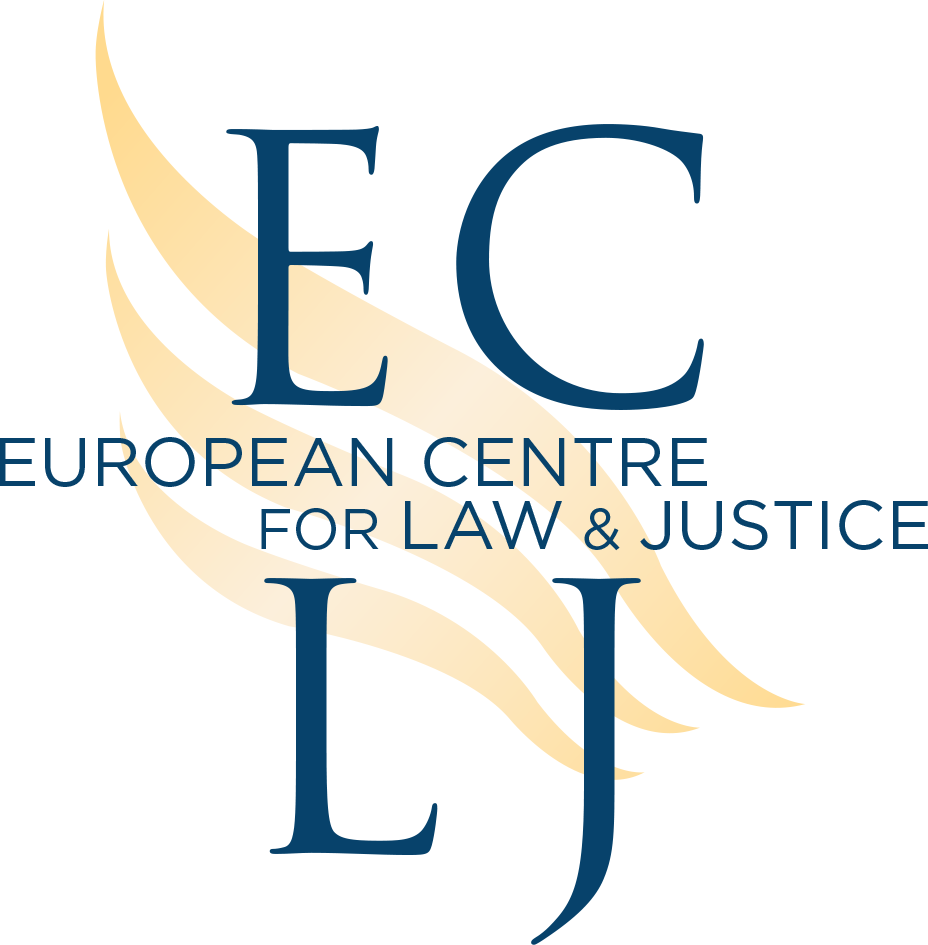Interview with Boštjan Zupančič, the longest-serving judge at the European Court of Human Rights from 1998 to 2016. He chaired the Third Section. He also was judge of the Constitutional Court of Slovenia and vice president of the United Nations Committee Against Torture. He is the author of On the European Court of Human Rights: An Insider’s Retrospective (1998-2016), Eleven International Publishing, 2019.
Interview by Grégor Puppinck, Director of the ECLJ.
Does the European Court serve justice or a model of society; or both?
This is an excellent question. What is “justice”? Everywhere, not only in Strasbourg, the legal process is used to solve conflicts, which, at the European Court of Human Rights, oppose individuals and the State. When the domestic (national) legal system does not work properly, the victim applies to the court of last resort. If the state in question is found “guilty”, the individual has won against the power of the State. Thus, in principle, the power of the argument prevails over the argument of power. Could this be “unjust”? At the very least, the justice in Strasbourg is anti-authoritarian, that is, aimed, out of principle, against the national public authorities. As a result, this leads to an anti-authoritarian model of society. Hobbes’ Leviathan is defeated. However, the result differs between countries, depending on whether there is a real democracy. This is therefore different between the United Kingdom and, for example, Russia or Turkey, Georgia or Azerbaijan…
There are several human rights philosophies that lead, in practice, to different legal solutions. Is there an agreement within the Court on the understanding of human rights? Could you describe the understanding of human rights prevailing in Strasbourg nowadays? Is it different from that of the drafters of the Convention?
The European Court of Human Rights has 47 signatories States and 47 different judges. They do not share a common understanding of human rights, and even less of its philosophy. What they do share, and it is quite surprising, is their legal reasoning, thanks to which they can engage in discourse and deliberations, which make it possible, in the first instance, to resolve the conflicts previously mentioned. The Fathers of the Convention did not have a clear understanding of human rights either. The project of Strasbourg was originally an American project, as the British researcher Ambrose Pritchard proved. The Anglo-Saxon legal model, as I point it out in my book, is not very “affirmationist”, that is, it is limited to the pragmatic resolution of conflicts without adopting any theoretical position as a matter of principle.
Underlying this pragmatism, where do philosophical and ideological assumptions stand within the judgments? Some of the most important cases (in so-called societal matters) do not mainly deal with equity, but first with a fundamental moral choice. Is it the Court’s role to make societal choices beyond equity?
Let us be specific. In the Lautsi v. Italy case (2011), one of the five Chambers of the European Court took the lead in repealing the Italian law requiring the presence of crucifixes on classroom walls, considering it contrary to the European Convention. This led to a significant scandal in public opinion in Italy and in Europe. The case was then brought before the Grand Chamber, which reversed the Chamber’s decision. Another similar case, but in a different way, was the French case Lambert and others v. France (2015), in which the Court gave an unconvincing verdict, holding that Mr. Lambert had no right to life, even though it acknowledged his legal subjectivity considering this case from the perspective of the right to life (Article 2 of the Convention). In 2001, in the case Banković v. Belgium and 16 other (NATO) States, the Court ruled, unfairly, that the bombing of the television station of Belgrade did not violate the Convention; then it reversed its case law in the case of Al Skeini v. The United Kingdom (2001), finally ruling in favour of the families of casualties of British troops in Iraq. In the case Delfi A.A. v. Estonia (2015), the Court strongly defended freedom of expression on the Internet, and then declared that blasphemy (concerning Mohamed) was a crime in the case E.S. v. Austria (2019). Although these cases, particularly Lautsi, are ambiguous and confusing, the Court started from implicit and policy premises, which it then obscured with a smokescreen of technical details.
These cases are numerous, and this problem was supposed to be resolved by the Court’s respect for the “margin of appreciation of States”. These margins were intended as to restrict the Court’s action so that it does not interfere in internal affairs. However, over the years, the Court has gradually reduced its self-restraint, stating in hundreds of judgments that the European Convention is a “living instrument” which should not be taken literally, but the meaning of which should be interpreted “in the light of current conditions”, thus allowing its scope to be extended. A priori, judges not directly elected by the people behave like a mini-parliament. But that is not their job. It should be added that the Court is much more “courageous” against the States of Central and Eastern Europe than against the Western States; which is of course due to the Western judges (and the Registrar). The doctrine often used for reasoning is that of proportionality, which is a poor imitation of the American model of the “equal protection of the laws”. In the United States it is well known that this theory can justify almost anything. On the other hand, in cases where the Court could legitimately innovate in a creative way, it often remained in old frameworks without information value, as in the case of Blokhin v. Russia in 2016. All this has made me write many separate opinions published in my book Owlets of Minerva (2012). I stress again that the role of all Courts should simply be to resolve conflicts, in the ECHR between citizens and the respective State.
Do “Human Rights” exist in themselves? You seem convinced otherwise. In contemporary culture, “Human Rights”, understood as ideals, are nevertheless ubiquitous. They have become an unsurpassable horizon. This is the notion on which society throws its aspirations for truth, justice and progress. But if human rights are none other than the sum of particular and contingent decisions responding to particular conflicts, is the idea of “Human Rights”, as an ideal of immanent justice existing in itself, collapsing?
Of course, I agree. An existing human right is merely a supposed right if identified by the ECHR. The only determining principle is the right to “access to a court” competent to rule on the dispute. There are no human rights, there is only access to the Court, in this case, to the ECHR. That is the only question that matters. Human rights were, ab initio, an American ideological showcase vis-à-vis the Soviet Union and the countries behind the Iron Curtain. When I was at Harvard in the 1970s, we assumed that to be obvious. It was an opportunity for internationalist lawyers, of course, but the rest of us did not take them seriously. Nowadays, saying that is almost sacrilege because human rights are no longer just an ideology. They have become a religion. For what purpose? Obviously, to justify anything, from migration to hate speech. It does not seem to bother the people involved in human rights that no one knows what human rights actually are. On the contrary, this nebulousness works for them because they can, in their propaganda, project onto the human rights screen everything they consider politically useful. On the other hand, the life of the unborn child is not a human right? No one seems ready to grant the nasciturus the status of legal subject (legal subjectivity) which has been conferred upon him since the time of Roman law?
In that respect, you write that abortion is a “murder” from a certain stage of foetal in utero development, and you show that it is not justifiable under the Convention…
I address this question historically in my book, by returning to the Code of Hammurabi. Plato’s position was that abortion was not a homicide until the embryo had become a foetus, after the moment of infusion of the spiritual soul (pneuma) into the body. This was adopted by Gratian and was in effect for about 400 years. Pope Sixtus V took the position that there was murder at any time during the pregnancy. This is the position of the German Constitutional Court, or in Argentina, ettc. Plato’s position, obviously, stemmed from the perception of the “shapeless” nature of the aborted embryo. Today, biologists know that human life begins from conception. The embryo is not a “cluster of cells”. On the other hand, we know that many of these non-viable “clusters” are eliminated without the woman knowing that she was pregnant; this means that Plato’s position was very pragmatic. As in the famous American case of Roe v. Wade (1973), the first trimester is at the free disposal of the pregnant woman.
However, this is not a biological or a moral issue, but a jurisprudential issue. At some point, it results in the granting of the status of legal subject to the nasciturus, that is, to the one who is not yet physically born. But there is no logic in the case law of the European Court, which has never taken a position regarding the issue of abortion, leaving, in fact, the matter to the 47 States (A.B.C. v. Ireland, 2010), even though it ruled on the use of embryonic stem cells (Parrillo v. Italy, 2015) and stated in the case Vo v. France (2004) that protecting the life of the human foetus is a legitimate public purpose. Yet, the Court put itself in an inextricable situation by refusing to acknowledge the legal subjectivity of the foetus, even though it is very much alive, while granting it to Vincent Lambert, though he was in a vegetative state.
In France, to say that abortion is a crime is scandalous.
The fact that this statement is scandalous in France proves absolutely nothing. The tide is already turning in the United-States, the pro-life movement is growing, pro-life articles are now being published all the way up to Harvard Law School…
It is odd, to say the least, that large countries are culturally self-referential and self-centred and do not take into account the experience of other nations. This is true of the United-States, where I taught for 10 years and lived for 15 years, but also about France, where I have been living in Alsace for 18 years, as well as about Germany or China, and more generally about countries with a “glorious” past. Also, the language barrier, particularly in France, is also an obstacle. In other words, the more self-referential potentially the more bizarre. This goes for individuals and for the whole countries –, and their legal systems
How can we explain that abortion has become a dogma of the “religion of human rights”?
Yes, this dogma is well in line with the idea that human rights are gradually becoming an ideology, if not a religion. In 1974, Simone Veil had great difficulties – she said it was “a war” – in getting abortion through the French National Assembly. Was it a legal issue? Was her position based on principles? She presented it as an exceptional “solution” and, of course as legal exceptions tend to do, it became the rule. Twenty percent of French generations have been aborted since. From an anathema, abortion has become a sacred right. French people are particularly sensitive to the pressure of mass media manipulation (otherwise Macron would never have been elected) and to the resulting “political correctness”. But justice is a matter of logic and wisdom: media dogma should not influence the legal situation, which must be the result of autonomous legal reasoning. This autonomy is the corollary of the mental rectitude of judges (according to Piaget and Kohlberg), particularly at the European Court of Human Rights as the ultimate European jurisdiction. This rectitude is required by the European Convention (Article 21), but nowadays no one knows what it means. The consequences of this ignorance are now visible to all.
You write that the Court has become “activist”. What does that mean? How does the Court restrain itself? Is it possible in the absence of a counter-power?
The anathema in France, and rightly so, is the “government of judges”. Unlike the English, and this is surprising, the French public opinion is not critical of what is happening in Strasbourg. (Again, this has to do with the media). An activist court, anywhere, is a court that takes public policy decisions for itself, beyond the autonomous legal reasoning mentioned above. On this point, the two main legal system collide with each other. The Anglo-Saxon model bases its legal reasoning on analogy; whereas the continental system bases it on formal syllogism. The latter is extremely restrictive when there is a principle (a major premise) that any court must follow. But in Strasbourg, and in all the continental constitutional courts, even in France, when it comes to judging a particular case, often, either the major premises to be applied do not exist, or the similarities with precedents are unclear. The continental judges are not used to it, they then find themselves, in a way, without restraint. The continental legal systems have therefore moved from one extreme to the other, from legal formalism to an unfamiliar reasoning by analogy in which the Courts have no external limits, but should impose them on themselves. The consequence is a “judicial activism”: the government of judges. At the European Court of Human Rights, as I have stressed before, this appears with the use of the term “living instrument”. This activism is present in many cases. It is noticeable during the deliberations, but not in the final text of the judgment, which is written ex post facto, meaning that the legal argumentation of the judgment is elaborated after the decision, with an important use of copy and paste of previous judgments. Only an insider can properly detect the problem. The counter power lies within the Protocols (added to the Convention by the States) requiring respect for national margins of appreciation. But it is obvious that the limitation of judicial activism cannot be legislated.
Lawyers often complain about the unpredictability of the Court of Strasbourg, equally about the admissibility of the applications submitted (95% of which are rejected right away) as about the outcome of the case.
In my book, I discuss in detail the rule of the precedent stare decisis (whereby similar cases should be decided alike) and the tough nature of predictability in case law. In continental jurisdictions, the predictability of court decisions is based on the stability of the norms (major premises), the application of the judicial syllogisms and the devolution of control to higher instances. In the Anglo-Saxon Common Law, the consistency of jurisdictions is based on the management of precedents (facts, issues and rulings). At the ECHR, the stare decisis rule is not based on a syllogistic logic, but on analogical reasoning based on factual similarities between cases as in Common Law. This analogical reasoning seems less predictable since a case, on at least one aspect, can always be considered similar to another. However, research in artificial intelligence proves that analogical reasoning is superior to syllogistic reasoning. The factual comparison between precedents is more specific, down to earth, concrete and pragmatic. Once the precedent is revealed, the result is more predictable. The supervision carried out by the courts of appeal is even more important here. In continental syllogistic reasoning, on the other hand, the gap between the abstract and the concrete (between the principle and its application) is too wide.
A specific problem of the Court is that it allegedly uses analogical reasoning according to its own precedents, whereas judges and members of the Registrar are mostly continental lawyers trained in syllogistic reasoning and not analogical. Hence the unpredictability of judgments, which is increased by the lack of control of these judgments by a higher authority. As a result, the Court is increasingly self-referential – but volatile.
How are the Court's judgments ”made”?
The quality of the judgments has been constantly stressed by the former president Wildhaber. In the Grand Chamber, with 17 members, the public hearing is mandatory and the relevant elements of the case are submitted in advance to the attention of the judges. Immediately after the hearing, the matter is deliberated upon. The Registrar takes note of the deliberations and tries to follow the arguments in writing the draft judgment. That is more or less how it should be in any case.
Differently, in Chamber judgments involving five judges, the Chamber acts as a kind of drafting committee. First, the judge rapporteur (that is, mostly the national judge ) will normally consult the lawyers of the Registrar, and then the draft judgment will be prepared by the Registrar and presented directly to the other judges for deliberation. It follows from this procedure that in these chamber cases, as a judge, I never saw the case file in question, except when I was a national Judge –, but only the draft judgment. An exception was a Swedish case in 2000 in which, after a disagreement during the deliberations, I expressly requested to consult it. Therefore, the deliberations are merely based on the text of the draft judgment, and nothing else. The Chamber, in most cases, is akin to the comité de rédaction.
In any case, the real problem lies elsewhere. Since 2011, the Court has had a “filtering section”. There, literally hundreds of files are “filtered”, declared inadmissible right away, and will therefore never be seen by a judge.
Other cases are by the filtering section forwarded to a “single judge” (not the national judge) who decides alone, on the basis of only a few paragraphs drafted by the Registrar, depending on the workload of the national unit (even for countries such as Liechtenstein). Not only will this judge never see the file on which he or she must rule, but also, because of the language barrier, he or she would not even be able to read it. They are thus expected to reject the application with full confidence in the Registrar. As a legal consultant, I know from experience that in some of the cases submitted in English or French, the Registrar does not inform the single judge that the application was written in a language he or she can understand. This routine runs counter to the principle according to which the presence of the national judge (elected in respect of the Contracting State) is required in each case. Hundreds of cases are literally “swept under the rug” – other former judges have also informed me about that – and the single judge, out of blind trust in the Registrar, signs the few paragraphs of the letter finally sent to the applicants. Thus, the least trained in the hospital (the lawyers) sort out which patient (which application) will be able to see a real doctor (the judge). In other words, the “show” is run by the lawyers of the Registrar. Judges are replaced every nine years, but the lawyers of the Registrar remain and can less and less be circumvented. It should be added, that judges have practically little control ove the Registry lawyers. They are paid and promoted by the Council of Europe irrespective of the opinion the judges may have of them.
Is it not too harsh to say that judges are “more and more mediocre” when they are supposed to be the best in Europe?
Are they? I did not know that. Well, at first, they were indeed “high calibre”, but especially in international law, which has little to do with the cases which came to Strasbourg. However, they were great talents, consider for instance the Danish Alf Ross who was a genius. The transition to the “new Court” in 1998 led to the assimilation of former members of the European Commission of Human Rights into the new permanent Court. They were mostly not up to the level of the previous judges. The rest and the poor selection of judges were mostly political. I had a brilliant friend from Harvard who asked me if he should be a candidate. I urged him to apply. He went to see the Minister of Justice. She openly told him that she would nominate a woman, which turned out to be a well-known disaster. With one or two exceptions, the judges of the United Kingdom, Ireland, Cyprus and Malta (Anglo-Saxon Courts) are one or two steps ahead of the continental judges. One of those judges kept coming to my office to cry on my shoulder after deliberations. I asked her what was the matter was. A few times, she gave the same: “…they are so stupid.”
Does the Court sometimes sets itself goals, by choosing to deal with this or that type of case, or to promote this or that new right, in this or that country, at this or that time? This is the impression given, for example, by the fact that a whole series of cases against Poland concerning LGBT rights (some of which are old cases) have recently been communicated at the same time, all the while a campaign is simultaneously being conducted in that country by NGOs in favour of these same rights. Is it only a question of internal organisation of work?
Well I was not aware of such events in my time. But again, you must keep in mind that there is no ECtHR as such. There are different judges and different lawyers dealing with different cases. If a judge has the inclination you describe, it is his personal inclination, maybe his ulterior motive. In view of the above, this is now certainly possible. A more disastrous aspect of this situation is what is known as strategic litigation. It is led by great lawyers in certain areas of law. This was the case in 2007 of the famous case of D.H. and others v. the Czech Republic regarding Romani children in the Czech Republic, and several others. Ostensibly, the intention was to protect the rights of the Romani people, which is good, but the motive, the underlying motive, was to create a case law for later purposes. In this case, the lawyers (Lord Lester and Mr Goldstone) never met the applicants, which is quite revealing.
In 1950, the Convention was adopted to protect Europe from totalitarianism and to counter communist regimes. Do you think that Europe is nowadays facing new totalitarian threats (for instance Islamism and transhumanism)? If so, is the ECHR able to defend us?
Indeed, the idea of human rights and of the Court was, as I have already explained, created as a showcase for countries on the other side of the Iron Curtain. By the way, you can see three pieces of the Berlin Wall backstage at the European Court of Human Rights. It is also true that most of the rectifications made by the Court to the rule of law have been aimed at the countries of Central and Eastern Europe. In these countries the Court did not cause much damage. When it comes to new totalitarian threats, they can be dealt with on a case-to-case basis, as, for instance, with the outrageous behaviour of the gendarmerie of Macron towards the Yellow Vests. This is truly appalling. This is the ultimate torture, in application of the Selmouni case in which France was sentenced in 2000 for violence inflicted by police officers on a person in custody. When these matters of violence against the Yellow Vests arrive in Strasbourg, the Court will undoubtedly issue a “pilot judgment”, that is, a benchmark precedent for systemic and structural dysfunction. These acts of violence are violations caused by a State (France), while Islamism and transhumanism are not attributable to a public entity (legitimatio passiva) and cannot therefore be condemned by the European Court.













